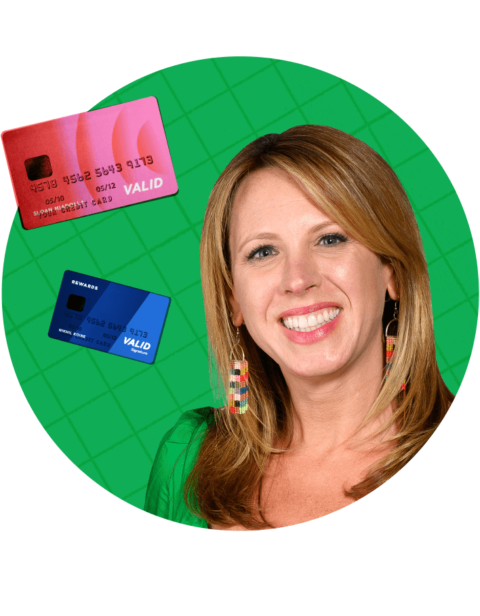9 Things to Know Before Getting the Chase Sapphire Reserve
Consider the annual fee, your travel and spending patterns and your sign-up bonus eligibility before applying.

Many or all of the products on this page are from partners who compensate us when you click to or take an action on their website, but this does not influence our evaluations or ratings. Our opinions are our own.
The Chase Sapphire Reserve® is a popular premium travel credit card offering several perks for a high annual fee. If you’re looking to rack up a lot of Chase Ultimate Rewards®, the card makes it easy to do so.
Although the Chase Sapphire Reserve® has a higher annual fee than the Chase Sapphire Preferred® Card, the former offers more benefits, like lounge access and annual credits.
Here are nine things to consider before applying for the Chase Sapphire Reserve®.
On this page
1. Your credit score
Though Chase doesn’t officially publish the minimum credit score required for getting the Chase Sapphire Reserve®, a strong score is needed.
Based on crowdsourced data, those who have a good to excellent credit score have a lower chance of getting denied.
Win Private Travel 'AMA' ($250 value)
Get the ‘cheat codes’ to using travel points and miles so you can spend less cash. 📥 Sign up for our free newsletter before Jan. 4 and enter to win a 1:1 travel rewards coaching session.

2. The $795 annual fee (and what benefits can offset it)
As expected from premium travel credit cards, Chase Sapphire Reserve® comes with a steep $795 annual fee. Because of this, you need to decide if all the perks and credits justify the cost for you.
The annual travel credit
The most flexible benefit to offset the annual fee is the $300 annual travel statement credit. Any purchases that code as travel (e.g., flights, hotels, cruises, trains, buses, taxis, car rentals, etc.) are eligible for the credit.
If you intend to use the card for travel, earning the $300 credit effectively reduces the annual fee to $495, which is much easier to stomach.
🤓 Nerdy Tip
Chase defines "annual spending" as your account open date through your account anniversary date, rather than a calendar year. The Edit credit
The Chase Sapphire Reserve also comes with up to a $500 credit towards high-end hotel stays with The Edit program. The credit comes in the form of $250 every six months, from January through June and July through December. There's also a two-night minimum for the credit to kick in.
Restaurant credit
When using your Chase Sapphire Reserve® with the Sapphire Reserve Exclusive Tables program, you’ll get up to $300 per year — again as $150 in the first half and second half of the calendar year — for qualifying dining purchases at select restaurants. These restaurants are mostly located in major U.S. cities, including Atlanta, Austin, Boston, Charleston, Chicago, Dallas, Denver, Detroit, Houston, Las Vegas, Los Angeles, Miami, Milwaukee, Minneapolis, Nashville, New Orleans, New York City, Philadelphia, Portland, San Antonio, San Diego, San Francisco, Seattle and Washington, D.C.
StubHub credit
Receive up to $300 in StubHub credits with $150 for purchases between January and June and a further $150 from July to December. This benefit is valid through December 31, 2027.
Apple credit
Enjoy up to $250 in credits each year toward Apple TV+ and Apple Music subscriptions, through June 22, 2027.
Peloton credit
Get up to $120 in credit toward a Peloton membership each year as $10 each month, through December 31, 2027.
Lyft credit
Enjoy up to $120 each year with Lyft, whose credits come in at $10 per month, through September 30, 2027.
DoorDash credit
You also receive a monthly DoorDash credit. The credit varies depending on what you’re purchasing; you’ll get up to $10 off two grocery and retail orders every month or up to $5 each month on restaurant orders. This totals $300 in credits per year and is available through December 31, 2027.
Global Entry, TSA PreCheck or Nexus application fee credit
Other statement credits include up to $120 toward a Global Entry, TSA PreCheck or Nexus application fee every four years, and access to deals via Chase Offers, which provides cash back statement credits when you make purchases at specific merchants.
» Learn more: Is the Chase Sapphire Reserve worth its annual fee?
How to calculate estimated out-of-pocket costs
If you take advantage of these credits, you’ll come out way ahead against your annual fee. If you take advantage of all available credits, you can get over $2,000 per year in value.
And even if you can't use all of the credits, you might determine the other card perks (i.e., lounge access, bonus points in certain categories, travel insurance, etc.) make the card worthwhile.
3. Welcome bonus eligibility
Chase limits how many bonus offers applicants can collect from Sapphire cards. While it’s possible to get the card even if you’ve had it before — or if you already have the Chase Sapphire Preferred, you may not be eligible for the welcome bonus.
You’ll receive a pop-up notification letting you know before you apply if the bonus isn’t available to you.
» Learn more: Chase Sapphire showdown: Reserve vs. Preferred
4. Additional spending benefits
If you’re a big spender, Chase will offer you additional benefits. However, the threshold for this is high: $75,000 in a calendar year.
If you’re able to meet the spending requirement, you’ll get these premium perks:
- Southwest Airlines A-List elite status and a $500 Southwest Airlines credit when booked through Chase Travel.
- IHG One Rewards Diamond elite status.
- $250 in credit for Chase’s shopping platform, The Shops.
5. Can you meet the minimum spend to earn the welcome offer?
The Chase Sapphire Reserve® has the following welcome offer: Earn 125,000 bonus points after you spend $6,000 on purchases in the first 3 months from account opening.
You need to consider whether you can spend the required amount in the specified time frame to earn the sign-up bonus.
🤓 Nerdy Tip
It's never worth it to go into debt to earn a credit card’s welcome offer, as the fees you’ll incur will negate the value of the points earned. » Learn more: How to spend $4,000 in 3 months
6. Your spending trends
The Chase Sapphire Reserve® is a good everyday card, but it also rewards you in certain categories, including:
- 8 points per $1 spent on all travel booked through Chase.
- 4 points per $1 spent on flights booked directly with airlines.
- 4 points per $1 spent on hotel stays booked directly.
- 3 points per $1 spent on dining.
- 1 point per dollar spent on all other purchases.
Are you a big traveler? Chase designed this card to reward those who use it for travel purchases, whether that’s flights, hotels, rental cars or even tourist activities.
» Learn more: Why you need a Chase Sapphire Reserve card
7. Redemption options
You can redeem Chase points in numerous ways, including transferring to airline and hotel partners, redeeming through Chase’s travel portal or redeeming for statement cash credits and gift cards.
» Learn more: How to redeem Chase Ultimate Rewards® points
The most lucrative redemptions are often when you transfer your points to an airline and book premium cabin awards.
Full list of Chase transfer partners
Airlines
- Aer Lingus (1:1 ratio).
- Air Canada (1:1 ratio).
- Air France-KLM (1:1 ratio).
- British Airways (1:1 ratio).
- Iberia (1:1 ratio).
- JetBlue (1:1 ratio).
- Singapore (1:1 ratio).
- Southwest (1:1 ratio).
- United (1:1 ratio).
- Virgin Atlantic (1:1 ratio).
Hotels
- Hyatt (1:1 ratio).
- IHG (1:1 ratio).
- Marriott (1:1 ratio).
You can also redeem your rewards through Chase's travel portal at a rate of 1 cent per point. There are certain Points Boost redemptions within Chase's travel portal, which allows you to redeem your points for a rate of up to 2 cents each on eligible flights and hotel stays.
» Learn more: How airline elite status works
8. Additional travel perks, like insurance and lounge access
The Chase Sapphire Reserve® offers several travel-related perks that can save you money.
Lounge access
Cardholders get Priority Pass Select membership, plus access to Chase Sapphire Lounges for you and up to two guests and access to eligible Air Canada Maple Leaf lounges. Considering how expensive airport food and drinks can be, taking advantage of this benefit can be a smart money move.
» Learn more: The guide to Chase Sapphire Reserve lounge access
Travel insurance
The card also offers solid travel insurance protections, including trip cancellation, trip interruption, trip delay and car rental insurance.
If you purchase third-party travel insurance often, look at the Chase Sapphire Reserve®’s complimentary travel protections to check if the limits are sufficient for you. If the coverage is suitable, you can save money by not purchasing a standalone travel insurance policy out-of-pocket.
» Learn more: 10 types of Chase Sapphire Reserve travel insurance
9. Your Chase 5/24 status
You won’t be approved for the Chase Sapphire Reserve® if you’re not under Chase’s unpublished (but widely believed) 5/24 rule.
If you’ve opened five or more personal credit cards in the last 24 months (from any bank), you’re unlikely to be approved for the Chase Sapphire Reserve®.
» Learn more: The best Chase credit cards
Final thoughts on the Chase Sapphire Reserve®
The Chase Sapphire Reserve® often ranks on NerdWallet's Best Travel Cards list, and for good reason: It is a solid premium travel card that offers a lot of perks for someone who loves to travel.
Although the card has a high annual fee, it offers multiple cash back credits that reduce the fee, along with many travel-related perks that can end up saving you money.
If you’re within your Chase 5/24 count and your credit score meets the rumored minimum required, getting the Chase Sapphire Reserve® can be a smart money move.
How to maximize your rewards
You want a travel credit card that prioritizes what’s important to you. Here are some of the best travel credit cards of 2025:
- Flexibility, point transfers and a large bonus: Chase Sapphire Preferred® Card
- No annual fee: Wells Fargo Autograph® Card
- Flat-rate travel rewards: Capital One Venture Rewards Credit Card
- Bonus travel rewards and high-end perks: Chase Sapphire Reserve®
- Luxury perks: American Express Platinum Card®
- Business travelers: Ink Business Preferred® Credit Card
Article sources
NerdWallet writers are subject matter authorities who use primary,
trustworthy sources to inform their work, including peer-reviewed
studies, government websites, academic research and interviews with
industry experts. All content is fact-checked for accuracy, timeliness
and relevance. You can learn more about NerdWallet's high
standards for journalism by reading our
editorial guidelines.
Related articles










